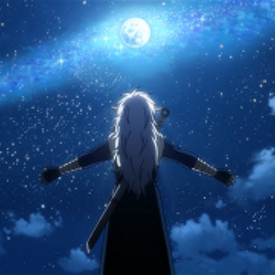When many people hear the words “Sword & Sorcery”, they immediately think of Conan. He might be Robert E. Howard’s original, or the L. Sprague de Camp/Lin Carter pastiche Conan, the Marvel Comics Conan of Roy Thomas, or sadly, the Arnold Schwarzenegger movie Conan. No matter which they think of, there is good reason for this association. Conan was not the first S&S character, but he was the first S&S superstar. Howard’s most popular character, hated by some critics, dismissed by others, it matters not. Conan is iconic. He is the poster child for all things Sword & Sorcery.
Conan’s career was never well planned. Howard once wrote to Clark Ashton Smith: “Some mechanism in my sub-consciousness took the dominant characteristics of various prize-fighters, gunmen, bootleggers, oil field bullies, gamblers, and honest workmen I had come in contact with, and combining them all, produced the amalgamation I call Conan the Cimmerian.” He was said to be born on a battlefield but a scrap heap is actually more accurate. After Howard’s first S&S hero, Kull, failed to produce, the author rethought the mix and adapted a rejected Kull tale, “By This Axe I Rule”. Howard added supernatural elements and Conan appeared for the first time in “The Phoenix on the Sword”. Again, not well planned, for this story takes place at the end, when Conan has secured his kingdom. No spry little barbarian running around the hills of Cimmeria. Such tales did follow though. “The Rogues in the House” and “The Tower of the Elephant” go back to Conan’s youth when he survived as a thief in the streets of Zamora.
With both ends in place, Howard proceeded to fill in Conan’s career, as pirate, bandit chief, as mercenary soldier, frontier scout and eventually, king. These tales proved popular in Weird Tales, where all the original Conan tales appeared except one. (“Gods of the North” was rejected and appeared for free in the fanzine The Fantasy Fan.) Howard enjoyed writing fantastical history; Farnsworth Wright appreciated any ghoulies or monsters for weird effect, and the series went on for four years. It only ended when Robert E. Howard ended, with a suicidal bullet in the head. The last original Conan story was “Red Nails”, a good novella (a bit of a potboiler) but Conan went out on a high, not a low. Eighteen stories and novels, many classics including “Queen of the Black Coast”, “The Devil In Iron” and “Beyond the Black River”. We all have our favorites.
It might have ended there. Howard had, unlike H. P. Lovecraft and his Cthulhu Mythos pals (of which Howard was one) kept Sword & Sorcery largely to himself. He really had no idea what he had created, an entirely new sub-genre, one filled with sword-swinging adventure set in a secondary world of magic and monsters. It would take later writers, Henry Kuttner in particular, to set Sword & Sorcery down that road. In 1936, Conan was a popular character in a minor pulp magazine. Howard was no longer there to write about him. Conan had only started his career and could easily have bowed out for good. But Conan would rest in his Pulp cocoon for 10 years (until Arkham House would release Skull-Face and Others, containing five Conan tales.) The world was not yet done with the raven-haired barbarian from Cimmeria, not by a long shot.
The Original Weird Tales Conan Stories
1. “The Phoenix on the Sword” (December 1932)
2. “The Scarlet Citadel” (January 1933)
3. “The Tower of the Elephant” (March 1933)
4. “Black Colossus” (June 1933)
5. “Xuthal of the Dusk” (aka “The Slithering Shadow”) (September 1933)
6. “The Pool of the Black One” (October 1933)
7. “Rogues in the House” (January 1934)
8. “Gods of the North” (aka “The Frost Giant’s Daughter”) (The Fantasy Fan, March 1934)
9. “Shadows In the Moonlight” (aka “Iron Shadows in the Moon”) (April 1934)
10. “Queen of the Black Coast” (May 1934)
11. “The Devil In Iron” (August 1934)
12. The People of the Black Circle” (September-November 1934)
13. “A Witch Shall Be Born” (December 1934)
14. “Jewels of Gwahlur” (March 1935)
15. “Beyond the Black River” (May/June 1935)
16. “Shadows in Zamboula” (aka “Man-Eaters of Zamboula”) (November 1935)
17. “The Hour of the Dragon” (December 1935-April 1936)
18. “Red Nails” (July-September 1936)















Gotta love these wonderfully salacious early Weird Tales covers.
I bought my first paperback copy of "Conan the Conquerer" in 1968 (I still have it somewhere) and then later bought at the newstand the first 24 issues of Marvel's Conan, which were drawn and colored by Barry Smith. Cover price: 15 cents.
More great insight into the writing and career of REH. I grew up on the comic Conan, until I discovered that they had made books about my favorite comic character. LOL For me "Tower of the Elephant", "Queen of the Black Coast", "The Hour of the Dragon", and "Red Nails" are the most iconic of his stories.
Amazing to think how short his life and career were in relative terms, but what a huge impact he made in the world. My own writing is influenced by REH, some of which falls neatly into the sword and sorcery category. I'm also influenced by the origins of sf,f,h literature in regards to story length. Weird Tales and Amazing Stories built the genre and the industry on shorter length pieces. I have found my own journey in writing hovering at those lengths. They seem the natural Genesis for writing on the road to massive thousand page tomes.
Thanks for the exploration of REH.